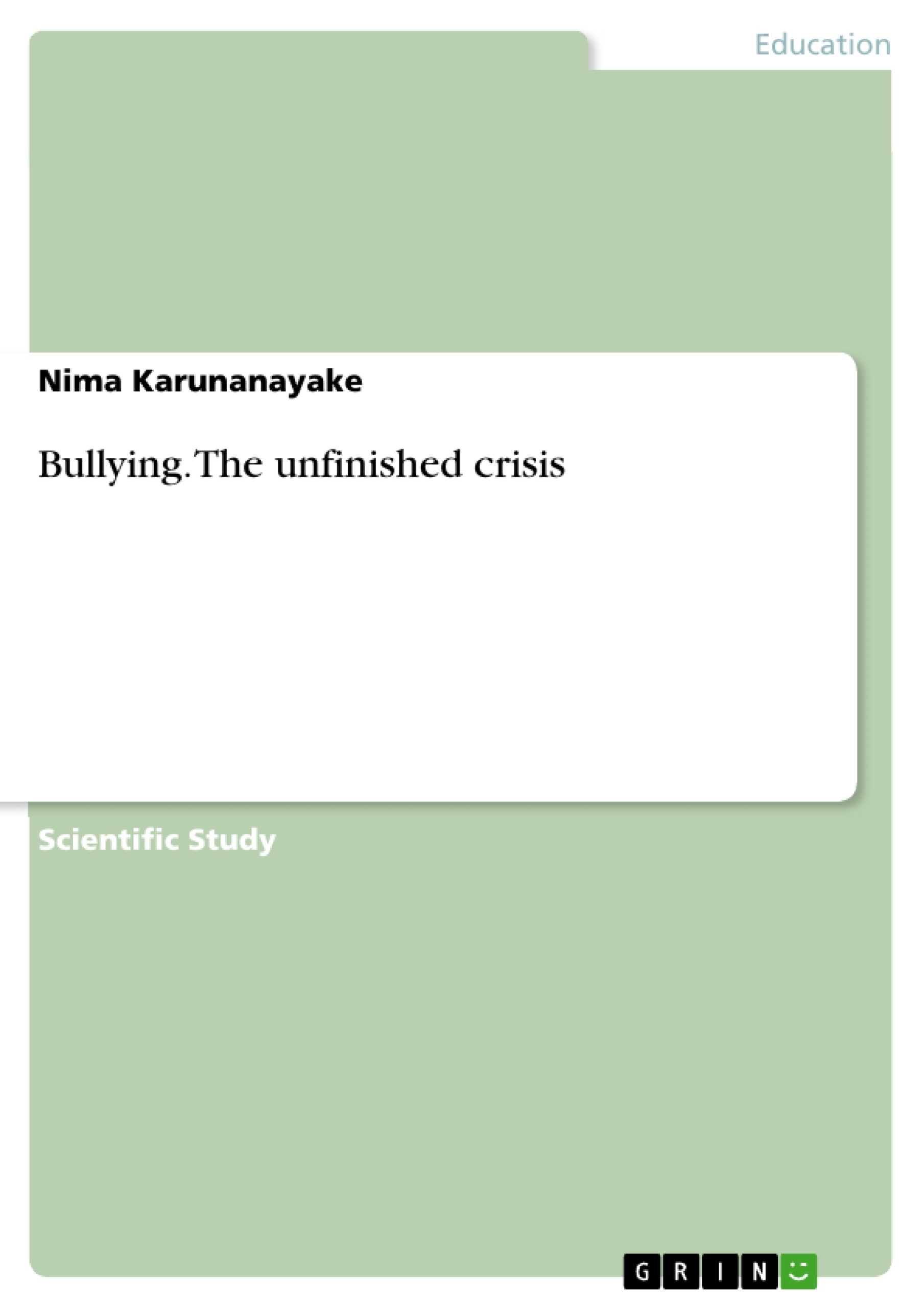Despite social developments, harassing colleagues is a common crisis and becoming a universal culture pattern in the society. It is a crisis that creates huge physical and emotional drawbacks among the community. This book will discuss bullying behavior, one of the worst crises found in school contexts. Though the concept of bullying is much discussed, it is becoming a debatable issue with the rapid developments of the modern day society. It must be noticed that a high number of school students is absent per day and unwilling to engage in learning activities due to bullying.
The purpose of this study is to focus on the specific question why school students lack self-responsibility regarding regular school attendance. An analysis of the issue includes problems with school students and their education. There are many reasons for school dropouts today. What is the most important issue that leads students to skip school? Social circumstances, financial problems and medical issues could be some of the reasons. Is there a specific apathy towards dropping out and continuing education? Does bullying play a role here?
While discussing the latter issue, this study found that certain behavioral patterns of a small number of aggressive students harm twelve percent of students in school. Hence, repeated use of power over another is taken into consideration as bullying by this study. This book discusses the issue whether “bullying” among school students may directly affect their school attendance and education, and find answers to the question why school students lack self-interest in attending school.
Table of Contents
Abstract
Chapter One
1.1 Introduction
1.2 Overview
1.3 Bullying: As a Subset of Aggressive Behavior of Violence
1.4 Operational Definition by Types of Bullying
1.5 Bullying: School as a Common Ground
1.6 Bullying: As a Crisis
1.7 Bullying: Outcomes
1.8 Summary
Chapter Two
2.1 Introduction
2.2 Some Other Thoughts
2.3 Bullying from a New Angle
2.4 Summary
Chapter Three
3.1 Introduction
3.1.1 Bullying vs School Absenteeism
3.1.2. Bullies at Different Grounds
3.2 Case Studies
3.2.1 Case Study One: Teachers as a Bully
3.2.2 Case Study Two: Fate of a Student
3.3 The Experiment
3.3.1 Characteristics in Consideration
3.4 Factors in Consideration
3.4.1 Bullying Experiences
3.4.2. Bullying Versus Absenteeism
3.4.3 Variables Affecting on Bullying
3.4.4 Precautionary Measures
3.5 Types of Bullying in Common
3.5.1 Verbal Bullying
3.5.2 Physical Bullying
3.5.3 Emotional Bulling
3.6 Summary
4. Chapter Four
4.1 Implications
4.1.1 Safer School Environment.
4.1.2 Responsibility of Teachers
4.1.3 Colleagues as Core Partners
4.1.4 Parents’ Attention
4.1.5 Role of Adults
4.1.6 Role of System of Educational Designers.
4.2 Conclusion
Bibliography
- Quote paper
- Nima Karunanayake (Author), 2017, Bullying. The unfinished crisis, Munich, GRIN Verlag, https://www.grin.com/document/349949



